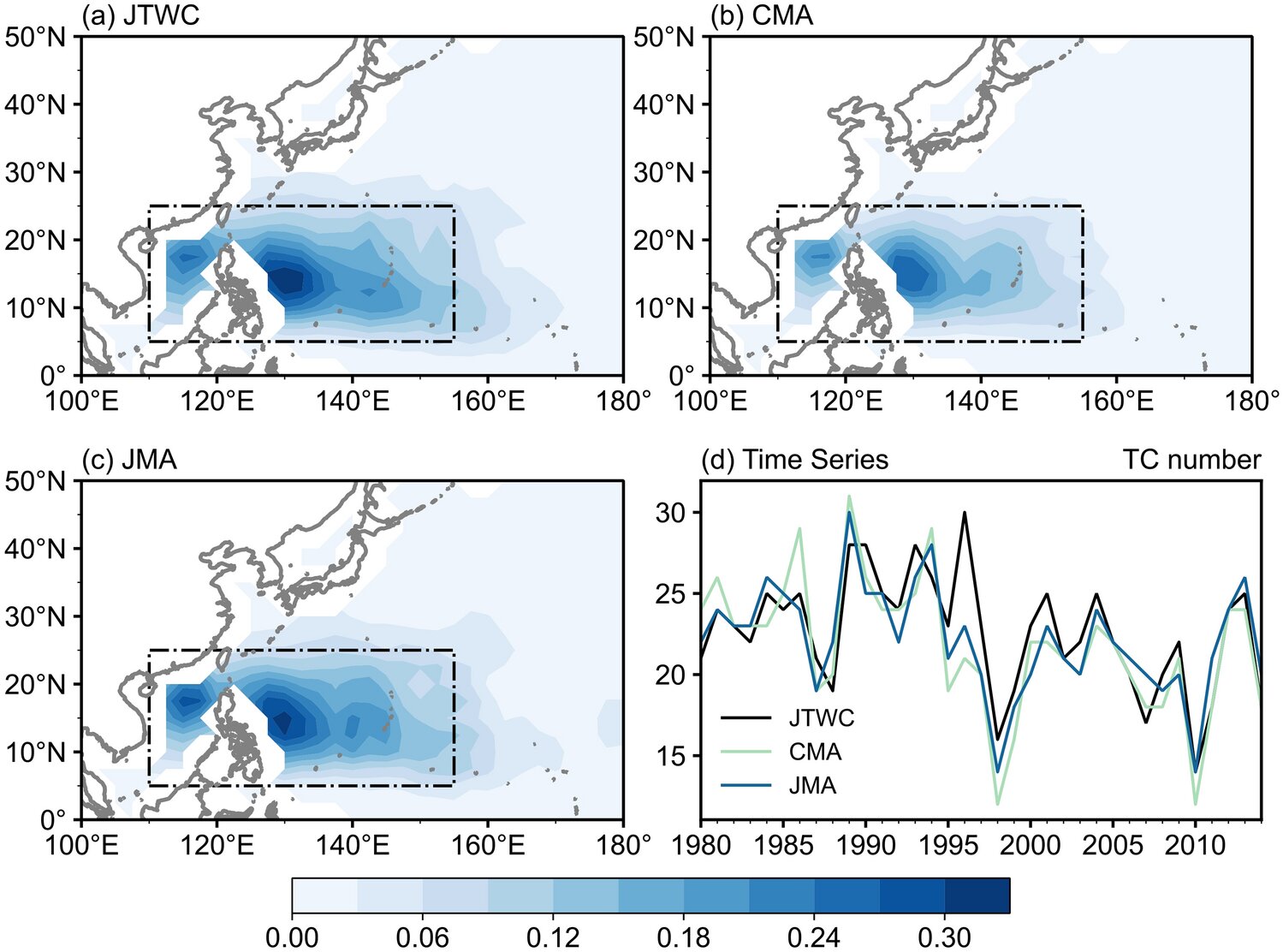A new study has revealed how decadal-scale climate fluctuations impact the ability of climate models to simulate tropical cyclone frequency in response to El Niño-Southern Oscillation (ENSO) events. This finding offers an improved understanding of tropical cyclone genesis and presents a way to enhance the accuracy of decadal cyclone predictions—an essential tool for preparing communities against cyclone impacts.
The study, published in Climate Dynamics, was conducted by researchers from the Institute of Atmospheric Physics (IAP) at the Chinese Academy of Sciences (CAS). Led by Ph.D. student Zhang Tingyu under the guidance of Prof. Zhou Tianjun, the research specifically examines how internal climate variability influences tropical cyclone genesis frequency (TCGF) and its relationship with ENSO, focusing on decadal patterns that can lead to differences in climate model outcomes.
Typically, climate model assessments have relied on single simulations, which blend internal variability with model bias and sometimes lead to inaccurate representations of TCGF. This study, however, leverages the FGOALS-g3 large ensemble (LE), a powerful model with 110 members developed by IAP/CAS. By analyzing an ensemble of simulations under identical climate forcing conditions with different initial perturbations, researchers were able to separate internal decadal variability from model bias and focus on its role in influencing cyclone activity.
“Internal variability is shown to play a significant role in determining how well models replicate the observed link between ENSO and tropical cyclone frequency,” explained lead author Zhang Tingyu. “When comparing different ensemble members, we observed that some accurately capture the known ENSO-cyclone relationship, underscoring the impact of internal decadal variability.”
Two commonly used metrics, or genesis potential indices (GPIs), were used in this study: the Emanuel and Nolan GPI (EGPI), which includes thermodynamic factors, and the Wang and Murakami dynamic GPI (DGPI), which emphasizes dynamic influences. The study found that the FGOALS-g3 LE model performs well in capturing the ENSO-affected cyclone activity through the EGPI.
The results also highlighted the role of the tropical Pacific decadal variability (TPDV) mode in modulating vertical wind shear, a critical factor in the Western North Pacific’s cyclone activity. This suggests that accurately capturing decadal variability patterns is crucial for modeling cyclone-ENSO relationships.
“Our findings underscore the importance of accounting for decadal variability and using multiple methods for tracking cyclone formation in climate models, which are necessary steps for improving cyclone-related climate prediction ,” noted Prof. Zhou Tianjun, the study’s corresponding author.
By demonstrating the value of large ensemble simulations, this study offers valuable insights into improving climate models to better predict tropical cyclone genesis in the context of changing climate conditions.
More information:
Tingyu Zhang et al, Evaluation of tropical cyclone genesis frequency in FGOALS-g3 large ensemble: mean state and interannual variability, Climate Dynamics (2024). DOI: 10.1007/s00382-024-07388-8
Provided by
Chinese Academy of Sciences
Citation:
Decadal climate patterns reveal new insights into tropical cyclone formation and El Niño-Southern Oscillation link (2024, November 5)
retrieved 6 November 2024
from 2i6
This document is subject to copyright. Apart from any fair dealing for the purpose of private study or research, no
part may be reproduced without the written permission. The content is provided for information purposes only.
